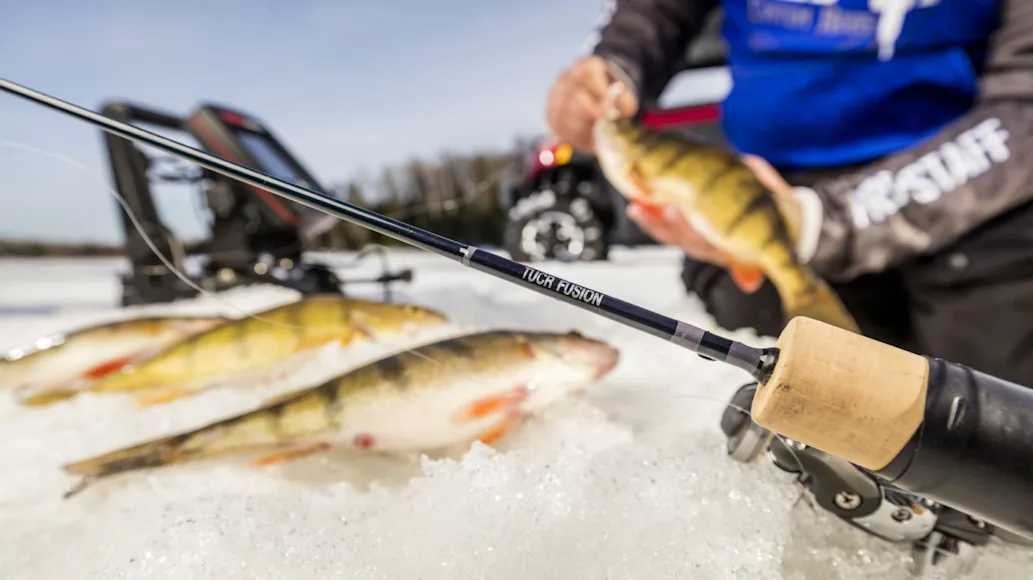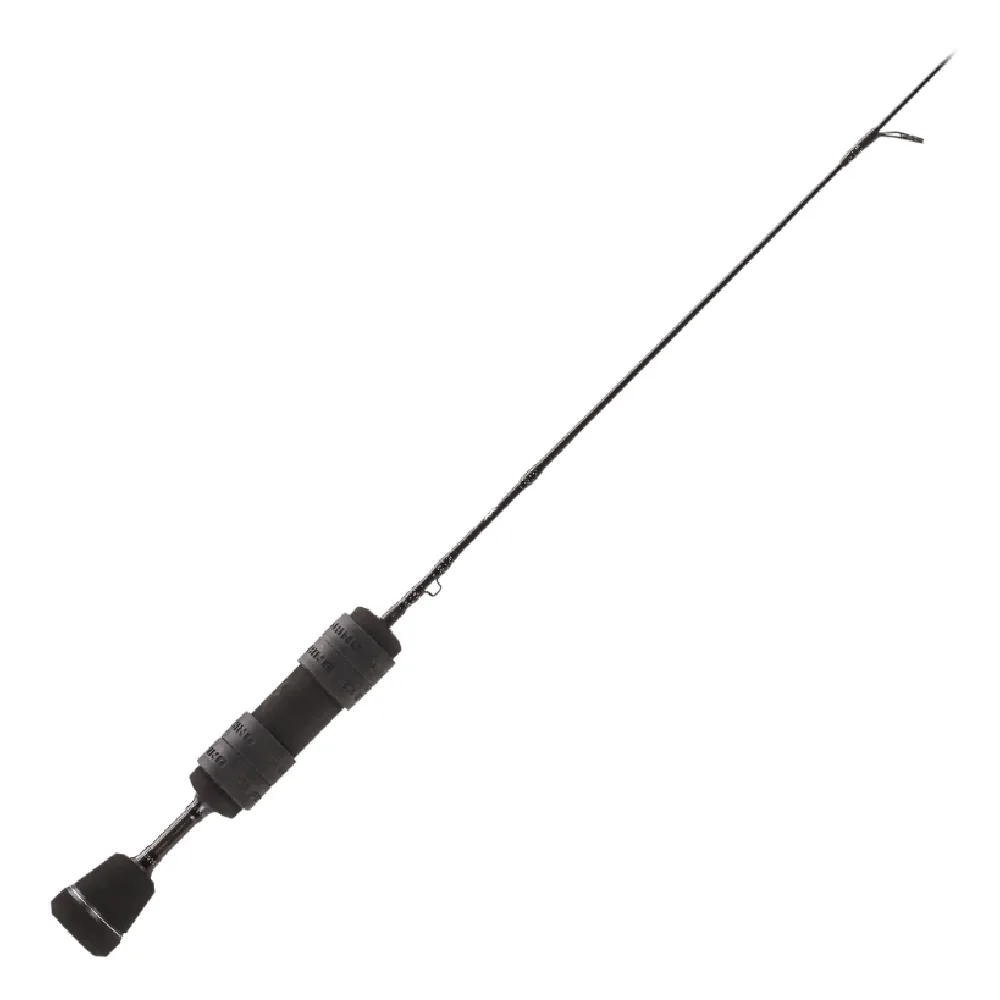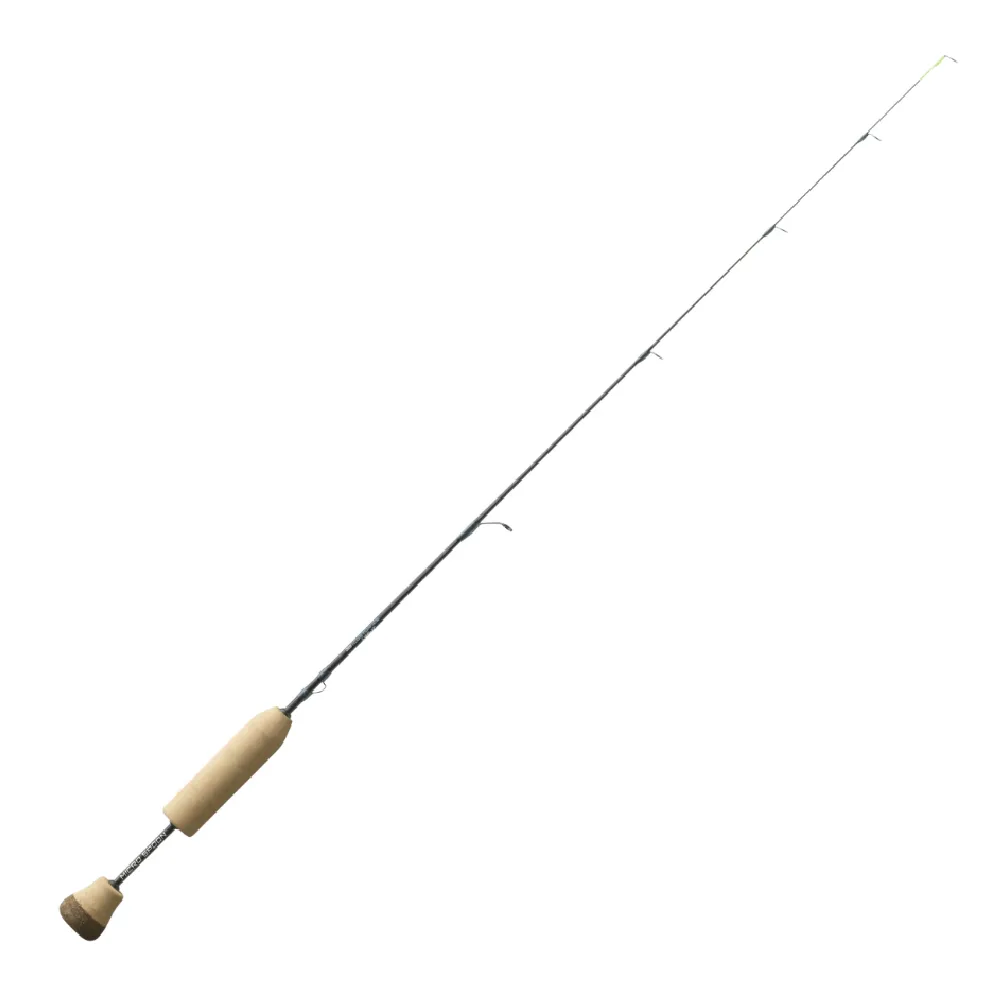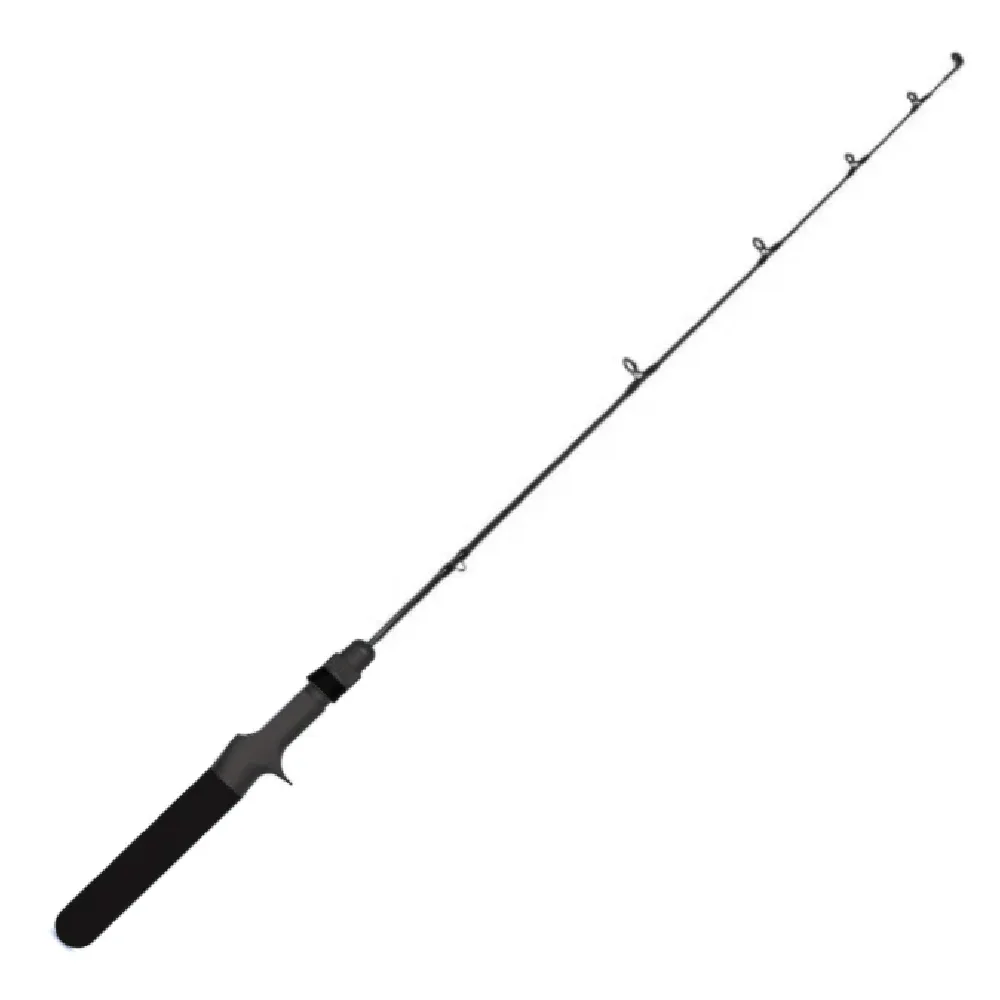We may earn revenue from the products available on this page and participate in affiliate programs. Learn more
An ice fishing rod may seem like a simple device, but not every ice fishing rod is created equally. Just as when picking fishing rods for open water, an ice rod’s length, power, and action are the key variables. To a certain extent, rod length correlates with your target species with shorter rods being used for smaller panfish, and longer rods being more useful for larger walleye, pike or trout. You must also consider where you plan to spend your fishing time: inside a shelter or outside in the elements. Most anglers who fish from shelters will select shorter rods because of the limited space available inside. In contrast, winter fishing outside of a shelter poses no rod length restrictions, and many mobile anglers prefer longer rods to make fishing more comfortable while standing.
Below are the best ice fishing rods, broken down by the species you're after. Pair one with a good ice reel, and you'll be hooking them in no time.
Best for Walleye: 13 Fishing Widow Maker Ice Rod
Best for Panfish: St. Croix Custom Ice Fishing Rod
Best for Trout: Tuned Up Custom Lake Trout Precision Ice Rod
Best Budget: St. Croix Mojo Ice Fishing Rod
Best for Walleye: 13 Fishing Widow Maker Ice Rod
The perfect ice fishing rod for walleye, the 13 Fishing Widow Maker is a 27-inch "tickle stick" rod with medium power and fast action. Tubular graphite construction reduces weight while enhancing sensitivity. Single-foot REC Recoil guides withstand the abuse of fishing in extreme conditions.
Best for Panfish: St. Croix Custom Ice Fishing Rod
An excellent rod for light-biting panfish, the Croix Custom Ice Pan Finesse rod is 24 inches long with a solid carbon blank for sensitivity and durability. This light power rod performs well with tungsten jigs and small spoons, and its extra-fast action couples a sensitive tip with a firm backbone for positive hooksets. The rod’s high-contrast tip eliminates the need for an accessory spring bobber.
Best for Trout: Tuned Up Custom Lake Trout Precision Ice Rod
An outstanding choice for lake trout or even jigging for big northern pike, the TUCR LTP is a 42-inch rod designed with tubular graphite construction that makes it both light in the hand and very sensitive. Its medium-heavy power is perfect for big airplane jigs and tube jigs, while the rod’s fast action ensures effective hooksets when trout bites occur in exceptionally deep water.
Best Budget: St. Croix Mojo Ice Fishing Rod
Mojo Ice rods are available in lengths from 24 to 36 inches, and in powers from ultra-light to heavy, it’s easy to find a Mojo Ice rod that matches the species you’re after—panfish, walleye, bass, and more.
What to Look For When Choosing an Ice Rod
Power and Action
The power rating of a rod—such as light, medium, or heavy—describes the typical lure weight that will cause a rod to flex. Thus, a rod with an ultra-light power rating, which would make a great panfish rod, will be flexed by far less weight than a medium or heavy power rod. The action of a rod describes the position along the blank where the primary bend or flex will occur. Think about action in terms of the rod’s “backbone." A fast action rod will flex close to the tip and thus have a long, stiff backbone. In contrast, a rod with moderate action will have its flex point farther down the blank, closer to the handle, where a less substantial backbone can act as a shock-absorber when battling larger predators.
Fish Species
Walleye
In many parts of the ice belt, walleye rule, and for good reason. Walleye remain active under the ice, consuming prey and funneling calories into the maturation of their reproductive tissues, which will be put to use during spawning season—typically right as the ice is leaving the lake. Hooking and landing walleye through the ice requires that you have a rod with specific qualities.
Most walleye anglers select a 32 to 36-inch rod when ice fishing. A rod on the shorter end of this range is a good choice when fishing in a shelter, and a 36″ rod is perfect for hole-hopping. Select a rod power based on your presentation. A classic 1/8 ounce rattle spoon dressed with a minnow head pairs well with a medium-light power ice fishing rod. If you’re fishing big-walleye waters like Lake Winnipeg or Lake Erie, where much larger rattle baits and jigging spoons are typically used, then a medium-heavy power rod is more appropriate. Because walleyes have such bony mouths, a rod with a stiff backbone is generally needed for a good, positive hookset. Choose a rod with a fast or even extra-fast action when chasing walleye through the ice.
Panfish
More ice anglers chase panfish—broadly defined as bluegill, crappie, and perch—across the ice belt than any other species. Panfish are generally easy to locate, can be found both shallow and deep, and are reliable biters throughout the season. Because of their abundance and their consistent appetites below the ice, panfish are regular guests at mid-winter fish fries.
Panfish are smaller than other ice fishing species, and because of that, a panfish rod will generally be 22 to 26 inches in length. They may be longer when mobility outside of a shelter is key. Panfish anglers present very light baits—often waxworms or spikes rigged on tiny tungsten jigs—so a light or ultra-light power rod is most appropriate. Choose an ice fishing rod action based on which particular panfish you’re chasing. Crappie, with their paper-like mouths that tear easily, often require a fast or moderate-fast action rod, while bluegill and perch can be effectively targeted with fast or extra-fast action rods.
Trout
Cold-water species, trout maintain high levels of activity beneath the ice, and frequently respond favorably to aggressive artificial presentations. The remoteness of many high-quality trout fisheries lends an additional layer of appeal to trout-focused trips, which may bring anglers far offshore onto frozen Great Lakes bays, or deep into the pine-studded wilderness of the Canadian provinces.
The trout we’re talking about aren’t the little ones swimming in the neighborhood stream. These are big, powerful fish that might weigh 20 to 40 pounds, with attitudes to match. As such, the characteristics of a quality ice fishing rod for trout will be quite different from those of walleye or panfish rods. First of all, trout fishing rods are typically long—frequently 36 to 42 inches in length, to provide the leverage we need to pull trophy trout from 50 to 100 feet beneath the ice. Second, because trout respond well to large, heavy lures and baits, anglers need rods with medium-heavy or heavy power ratings. Finally, rod action might vary from fast to moderate-fast or even moderate, because slower rod actions can absorb powerful runs and surges as trout begin to approach the ice cap.
Price
Walk through any tackle shop in the ice belt, you’ll see an abundance of budget-priced rods and combos. Closer inspection will begin to reveal why these rods are so inexpensive—the line guides aren’t aligned, the handles have defects, and the paint is sloppy. And that’s just what you see. Put them on the ice, under the strain of a quality fish, and their deficiencies will soon raise their ugly heads. There are some quality rods that you can own for $60 or less, but it’s definitely “buyer beware” at lower price points.
FAQs
Q: What is the best length for a rod for ice fishing? Choose an ice fishing rod based on your target species. In general, as the fish gets larger, the rod gets longer. Panfish anglers often choose rods that are 22 to 26 inches long. Those chasing lake trout and northern pike select long rods, frequently 36 to 42 inches long. If you’re hunting for walleye or bass, choose a rod length in between these two ranges.
Q: What is the best blank material for an ice fishing rod? Ice fishing rods can be designed with carbon (graphite), fiberglass, or a blend of these two materials – just like open water rods. Rods with graphite blanks tend to be more sensitive and have faster actions than rods with fiberglass blanks.
Q: How much should I expect to spend for a high-quality rod for ice fishing? You can get an excellent, species- and technique-specific ice fishing rod for $130-$200. Expect these rods to be light and well balanced, very sensitive to detect light bites, and excellent for setting hooks—and keeping fish hooked during the fight. A very cheap ice fishing rod—one in the $10 to $30 range—is not going to provide the performance you expect, nor withstand the challenges of fishing in the extreme cold. If you’re just starting out, begin with $50 to $60 rods and step up in quality as you spend more time on the ice.
Final Thoughts
Don’t skimp on quality when choosing the best ice fishing rod. Poorly made rods make fishing difficult, don’t allow for finesse, and may fail when you have a fish on.
Why Trust Us
For more than 125 years, Field & Stream has been providing readers with honest and authentic coverage of outdoor gear. Our writers and editors eat, sleep, and breathe the outdoors, and that passion comes through in our product reviews. You can count on F&S to keep you up to date on the best new gear. And when we write about a product—whether it’s a bass lure or a backpack—we cover the good and the bad, so you know exactly what to expect before you decide to make a purchase.









